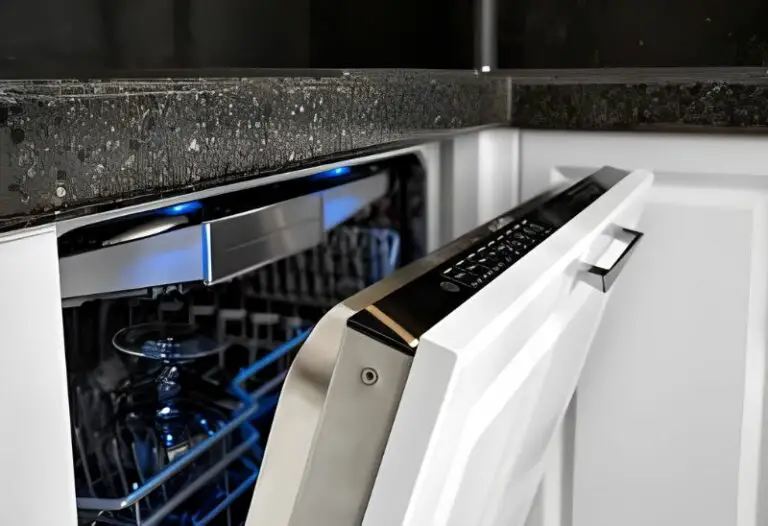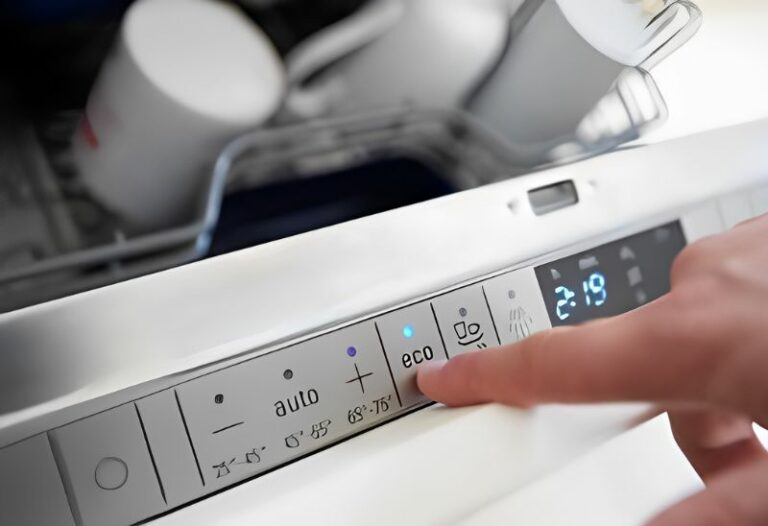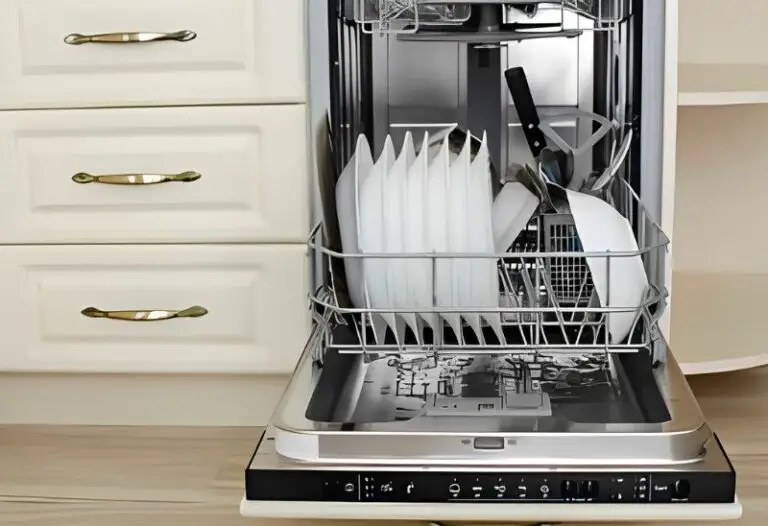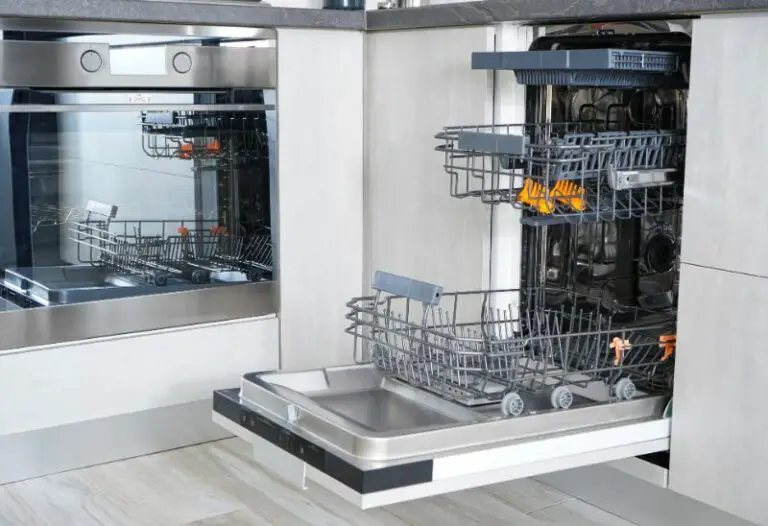Can Dishwasher Be Next to Stove? (Heat, Harmony, or Hazard?)
When redesigning your kitchen or installing new appliances, you might wonder about the best placement for your dishwasher. Can you put it right next to the stove?
Generally, it’s safe to install a dishwasher next to a stove, but you should maintain at least 2 inches of space between them. This gap helps in reducing the risk of heat damage or any potential safety hazards from the ambient heat of the stove.
Key Takeaways
- A minimum of 2 inches of space between a dishwasher and stove can enhance safety.
- Convenience and efficiency in kitchen workflow matter when placing your dishwasher.
- Design considerations should also influence the placement of your dishwasher in the kitchen layout.
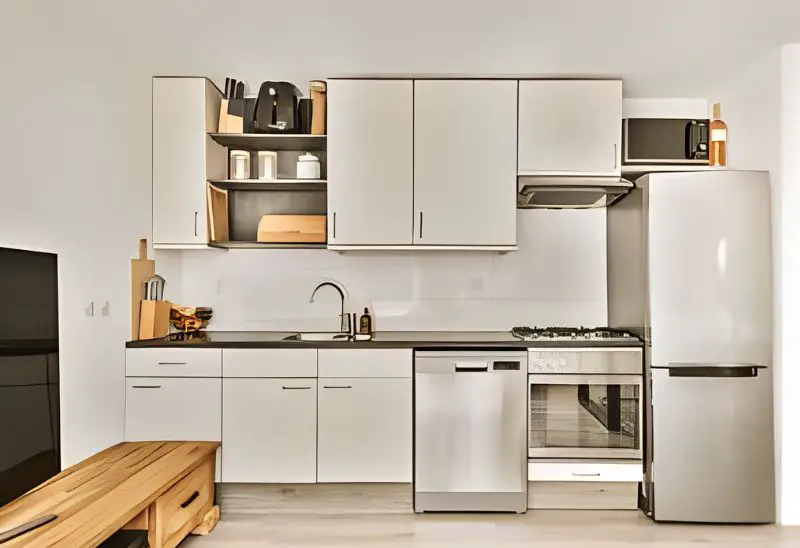
Safety First: Can You Put a Dishwasher Next to a Stove?
Kitchen safety is a top priority, especially when it comes to the placement of your appliances. Ensuring proper clearance and acknowledging heat sources will keep you and your dishwasher safe.
The Case for Separation: Wall Ovens and Heat Concerns
When considering wall ovens, which are often installed at a height convenient for use, it’s important to note that they generate significant heat. A heat shield may be necessary to protect your dishwasher from this heat. Typically, a minimum clearance of 18 inches is advisable to prevent heat damage and allow for safe operation. Wall ovens can reach high temperatures, and the heat dissipation could affect the dishwasher’s plastic components, leading to safety hazards.
Sharing Space Safely: Freestanding and Slide-In Ranges
For freestanding and slide-in ranges, safety remains a concern, but these stoves may allow for closer proximity to dishwashers. Since heat is often less intense and more directed with these stoves, it is recommended to maintain a clearance of at least 2 inches. This distance helps in reducing the risk of fire safety issues and promotes better heat management between the appliances.
Clearance is Key: Maintaining the Right Distance
Clearance space is not just about safety; it’s also about kitchen design and functionality. Whether you have a gas stove or an electric one, ensuring there is enough room between your dishwasher and stove will facilitate ease of movement in the kitchen. Keeping dishwashers and stoves at a safe distance minimizes safety hazards and allows for a comfortable cooking environment. Always adhere to clearance requirements to prevent accidents and prolong the life of your appliances.
More Than Just Safety: Workflow and Design Considerations
When planning your kitchen’s layout, it’s not only about keeping your dishwasher and stove at a safe distance. You also need to consider how this placement affects your kitchen’s functionality and design. Let’s look at how to optimize your kitchen for both efficiency and style.
Efficiency in Motion: Optimizing Your Kitchen Triangle
The kitchen triangle is a concept used by designers to create an efficient workflow. This involves three main work areas: the stove, sink (where your dishwasher is often located), and refrigerator. Ideally, you want these arranged in a triangle with no less than 4 feet and no more than 9 feet between them. Placing your dishwasher next to the stove can enhance productivity by reducing steps needed to clear and clean after cooking. But remember, too close, and you might hamper the functionality with cramped space or heat issues.
Visual Harmony: Matching Styles and Finishes
Aesthetics matter in kitchen design. Aligning the styles and finishes of your stove and dishwasher can bring visual harmony to your space. Manufacturers offer appliance sets with matching details, ensuring that side-by-side placement looks intentional, not just practical. When selecting a dishwasher to place next to your stove, consider the color, materials, and design lines. This creates a unified look that enhances the overall kitchen design.
Space Solutions: Making the Most of Small Kitchens
For small kitchens, saving space is key. Dishwasher placement becomes a puzzle where every inch counts. Innovative solutions like a dishwasher drawer can fit snugly under the counter next to a stove, leaving room for storage or prep areas. In small kitchen layouts, a standard-sized dishwasher might not be feasible. Measure your space, and look for slim models or consider alternative placement, like in an island, to maintain both functionality and accessibility without sacrificing kitchen space.
Deciding Factors: Beyond the Basics
When you’re planning the layout of your kitchen, it’s vital to consider not just where appliances will fit, but also how they will interact with each other. This means thinking about the airflow between your dishwasher and stove, the noise level, and how your choices could affect your appliances in the long run.
Ventilation and Humidity: Keeping Things Cool and Dry
It’s all about maintaining a happy balance in your kitchen environment. You want to keep moisture and heat from getting out of hand. So, when installing your dishwasher next to your stove, ensure there’s proper ventilation to ward off excess heat and humidity which can wreak havoc on your kitchen cabinetry and the longevity of both appliances. Using an exhaust fan or range hood above your stove is a smart move to manage the airflow and keep things cool and dry.
- Ventilation Must-Haves:
- Range hood or exhaust fan directly above the stove
- Adequate space between the dishwasher and stove for air circulation
Noise Factor: Minimizing Dishwasher Decibels
Now, let’s talk about sound. Dishwashers aren’t silent; they can chime in with a hum or a swish during their cycles. If your kitchen is the heart of your home, you’ll want to keep it a pleasant place to be. To minimize noise, consider the dishwasher’s decibel level when purchasing and check if extra insulation can be added during installation to dampen the sound. Placing a buffer, like a cabinet or a set of drawers, can also help absorb some noise if space allows.
- Sound-Softening Strategies:
- Check dishwasher decibel rating before buying
- Consider adding extra insulation around the dishwasher
Long-Term Impact: Warranty Concerns and Repairs
Thinking ahead can save you a headache—or a costly repair bill—down the line. Following manufacturer recommendations can prevent voiding your warranty. Both the dishwasher and stove have their own electrical and plumbing requirements, so consulting a professional installation specialist is your safest bet. This takes into account the necessary clearance for maintenance and helps ensure longevity for both appliances.
- Manufacturer’s Guidelines:
- Follow recommended installation clearances
- Consult professional installers for electrical and plumbing needs
Remember, a well-thought-out kitchen design not only looks good but also ensures cleanliness, maintenance efficiency, and the optimal performance of your appliances. Keep these tips in mind to create a safe and functional kitchen space.
Putting it All Together: Your Ideal Dishwasher Placement
Determining the right spot for your dishwasher involves understanding your kitchen’s layout and your personal preferences. Let’s explore how to make a choice that combines functionality, practicality, and aesthetics.
Weighing the Options: Your Kitchen, Your Rules
When it comes to dishwasher placement, your kitchen’s unique dimensions and layout take center stage. The key is to balance functionality and accessibility. Think about your kitchen’s work triangle—this is the area between your sink, refrigerator, and stove. Ideally, your dishwasher should be near the sink to facilitate easy rinsing and loading, but not so close to the drop-in range or stove that it creates a cramped space or a heat hazard.
The resources below can aid in your decision-making process for ideal appliance placements:
- Kitchen Design Books
- Online Design Tools
- Local Home Improvement Workshops
Remember, the pros of strategic dishwasher placement include efficiency in kitchen use and enhanced kitchen aesthetics—the cons, if not well planned, can be reduced accessibility and limited space.
Professional Inspiration: Examples of Stunning Layouts
Kitchen experts and designers often suggest looking at examples of well-planned kitchens to inspire your own. High-quality kitchen design magazines or Pinterest boards can showcase how professionals maintain the balance between a nice appearance and practical use. Notice how the necessary appliances are arranged to avoid obstructed movement and ensure safety.
Professional installation services might be worth considering if you’re unsure about the technical requirements, such as plumbing and heat clearances. This way, you can ensure your dishwasher placement meets all safety guidelines.
Final Touches: Resources and Expert Tips
Before making a final decision on your dishwasher’s placement, gather all the facts:
- Consult with a professional installer for personalized advice.
- Review the manufacturer’s instructions for necessary clearances.
- Analyze your daily kitchen activity patterns for insights into what will work best.
Remember, the goal is a balance between your kitchen design, functionality, and practicality. Your dishwasher should complement your cooking and cleaning flow, not hinder it. With the right resources and expert tips, you’ll be able to make a confident decision about your dishwasher’s placement in your kitchen.
